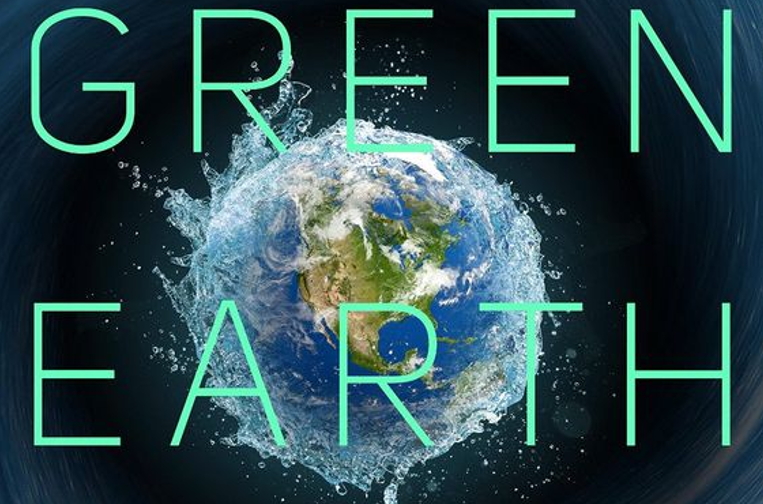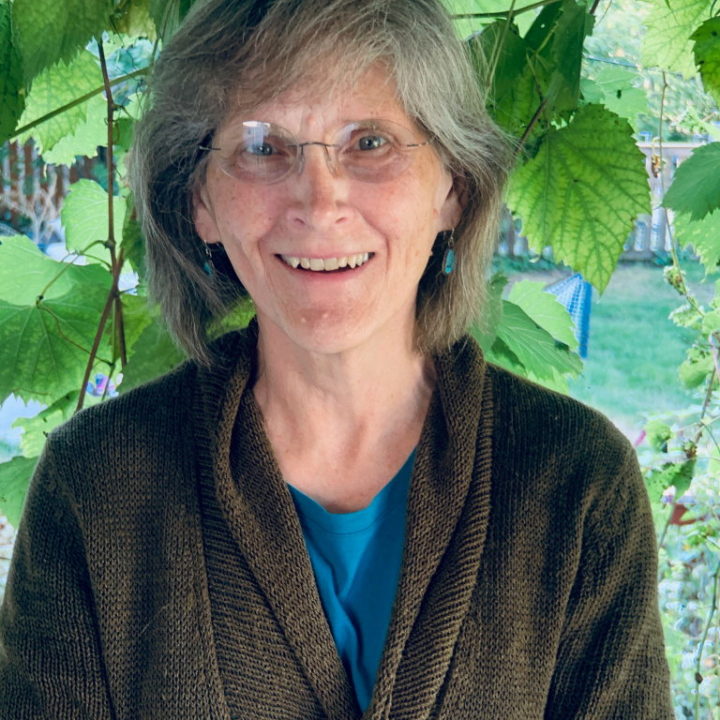Neither hope nor its cousin joy are to be confused with optimism. The latter tends to be more a quality of temperament than a realistic assessment of prospects. As for the former, well, you have to go looking for them, or even, laboriously, construct them for yourself, at best in the company of other people. By combining found materials with what you’ve got with you—like, say, dried grass and twigs with the flint and steel in your backpack—you can, with effort, spark and and nourish a little flame that, once going, you’ve still got to work to maintain.
That’s been my project lately, in our seriously dystopic times, when my most innocuous activities—biking to work, leading woods restoration workdays for students, working on sustainability projects—sometimes feel like political activism. There’s no need to enumerate the ways that the actions of those recreating atop the federal government threaten not only civil society but also the biosphere’s wellbeing. For earth-centered folks who include human wellbeing in the definition of planetary health, there are daily blows, even as it grows clearer that the doors to an environmentally whole future, in which global warming and its effects are somewhat mitigated, are rapidly swinging shut.
Well, then. Where to go looking? One’s active work one counts greatly, though the slowness and difficulty of that work can get disheartening. And I’m seeing a resurgence of outright, vocal, practical commitment to sustainable policy and practice grounded in local efforts by individuals, community groups, municipalities and states. This could help bend our society towards a sustainable arc. There is evidence that if 10% of a given population subscribes to a particular idea, theory or principle, or changes a way of doing something a whole group or society will change. Marketers and purveyors of authoritarian propaganda and fake news try to exploit this idea endlessly, but it can, and does, work the other way too.
If enough people change their minds and habits in real life and on the ground in their communities and through their networks, a move towards environmental justice, including for species other than humans, will occur. There is hope to be found in working with others on this project and actively rejoicing in that work: a community climate forum I attended recently at Chicago’s Field Museum of Natural History felt joyful. Stanley Field Hall, big enough to hold a pair of stuffed African elephants and the skeleton of a 40-foot long Tyrannosaurus, with plenty of room to spare, was packed, the energy contagious. Two thousand people celebrated their and their organizations’ work, in direct opposition to retrograde policies and actions engaged in by the current administration.
Then there are the hopeful facts that get semi-buried by news of humans and their doings. For example, whitefish in the Great Lakes have learned how to eat invasive round gobies that have threatened the ecosystem with collapse; rather than declining as expected, the fish are thriving, having learned to change their diet. Certain songbirds in the American West have started nesting slightly earlier, adapting to earlier springs and thus earlier appearance of the insects on which they depend to feed their offspring’s gaping mouths. Deeply inspiring for me, populations of sandhill cranes have come trumpeting back from near extinction because we humans aided them by conserving, restoring and expanding the wetland habitat on which they depend.
This looking for hope and joy has extended to the fiction I’ve been reading lately. At one time I might have naturally gravitated to some dire, prophetic novel such as “The Handmaid’s Tale” or “The Windup Girl.” At their best, these doomy novels have served as instructive warnings of what the world could become if we are not careful. They’ve given a thrill and embodied a necessary social critique. They still have a place, if well written enough. But these days, if you want dystopia, just check up on the (real) news.
This fall, however, I came across Green Earth (Del Ray, 2015), by Kim Stanley Robinson, and have kept it in mind as a part of my fire making kit ever since. Part of the relatively new cli fi genre, the book is full of climate-change related, extreme weather disasters. It could have been yet another nightmarish fantasy trip. Instead, its tone and structure convey hopefulness and there are moments of true joy. It is Robinson’s updated consolidated version of his Science in the Capitol trilogy first published in the early 2000’s.
With underpinnings of Shakespearean comedy, the novel mostly takes place in Washington, DC and features a group of scientists employed by the National Science Foundation together with people in their professional and social networks. What happens to them in the wake of apocalyptic flood and polar vortex events, and how the NSF decides as an institution to try to do something about global warming forms an inspiring tale. In keeping with the comedic structure, there is a forest (DC’s Rock Creek Park) where the rules of “civilization” don’t quite apply. There are lovers found, misplaced and found again, mistaken identities, and a range of characters from all sectors of society from Phil Chase, who runs for president and could be the Duke of Athens, to groups of homeless people and Frisbee-golf playing fregans standing in for “rude mechanicals.” There are strong women of active temperament, agents of their own fates (the NSF, for example, is run by the tough Diane, of noble temperament and stamina); supernatural elements embodied in a group of Tibetan Buddhists whose island home is threatened by rising seas; and a villain pursuing a pair of lovers. I think there’s even a “fool,” duties split between two-year-old Joe, who may or may not be the next incarnation of the Buddha, and his father, who works as an environmental policy writer for Phil Chase.
And we are always aware of the power of nature, its effects on people, and the mysterious forces that run it. There are encounters with wild animals and a notably athletic woman who appears from time to time, kayaking the Potomac River, who could possibly be an avatar of Gaia. In the tradition of such comedies, the protagonists progress towards greater self-knowledge and there are marriages and reconciliations at the end.
Journeying through the sprawling tale is Frank Vanderwal, the flawed yet endearing main protagonist. Frank is a surfing, rock climbing scientist from California whom we meet while he is doing a stint at the NSF in Washington. He thinks he is about to go back to California, but for reasons having to do with a sudden climate change event, a letter, and Diane, he stays. Since he had only sublet his apartment for a year, Frank becomes technically homeless. An experienced outdoorsman, he develops what he calls an “optimodal lifestyle,” involving a treehouse he constructs, a van, his office and the gym where he works out and takes showers. This situation leads to his moving nomadically through society. By his own admission, Frank is something of a quasi jerk given to ruminating on the beauty of the women of DC, who, through a combination of misadventures and encounters with the Buddhists, gradually gains self-knowledge and a modicum of maturity.
When the original trilogy was written and published prior to 2010, it must have seemed, to those not up on the threats, as somehow fantastical. Reading the revised and updated version, it has become an uncanny reflection of our times. When I started reading, I’d just learned of the slowdown of the thermohaline circulator. And while reading, hurricanes Harvey, Irma and Maria churned across sea and land. Houston’s 50-inches of rain chimed eerily with Robinson’s fictional storm in DC (while Puerto Rico’s ongoing difficulties have become a national disgrace). The novel’s extreme winters bring to mind the winter of 2013-2014 that introduced the words “polar vortex” to our common vocabulary; conditions, while not as bad as in the novel, caused hardship, and misery even among the hard-bitten denizens of the Chicago area where I live.
Gary Snyder once wrote that there are two streams of thought and belief that have the possibility of changing our culture and thus our relationship with the earth. One is the ancient idea of Gaia, mother earth, an idea coming to the fore in a new way. Our scientific and ecological knowledge increasingly understands the earth to be a single, complex, interconnected whole, perhaps not sentient, as the old myths would hold, but a powerful system on which all life depends and to which all life contributes one way or another: the living earth. The other is Buddhism, with its ideas that because all things are inter-related, humans are required to have compassion for all other living things. It is this combination of scientific and spiritual truth, which Snyder, a practicing Zen Buddhist and trained anthropologist articulates so poetically, that Green Earth embodies as comic fiction. Beyond the details of plot that, particularly in the year since the presidential election, take on an almost fairytale glow, or the shimmer of mirage, these deeper ideas add intellectual and emotional heft to the book’s comedy.
A difficulty with much dystopian fiction is that, while it can serve as warning, it can also be seen as a sort of self-fulfilling prophecy. Reading it in times like these can add layers of malaise, cynicism and depression to our experience of daily life in a way that can destroy hopefulness, and thus the ability to act in constructive ways. Nor does it seem to me that that most escapist fantasy, with its larger than life-size heroes endowed with magical powers untethered from very real laws of physics, is very helpful, or at least not beyond adolescence. There is a great need for fiction that might invigorate one to act as one can, where one is, with what one has, to address the very real political and environmental dilemmas of today.
Right now we need imaginative fiction that can help us understand and chart our way forward among real dangers. Fiction, like myth, is vital to the journey. The non-fiction purveyors of global warming solutions, for example, shouldn’t be the only semi-hopeful voices in the room. For one thing many do not, frankly, write very well. For another, most people’s imaginations are best caught and inspired through narrative. Our brains are fully engaged when encountering stories, and we learn from them more easily than through other means. Poetically-true story and myth are vastly different from the alternative-facts lies and perversions of reality that authoritarian leaders and governments employ. Story and myth exist in a sort of meta-reality and we confuse them with lived reality governed by physical laws at our peril. Though made up and not pretending to be real, the good stories do not shy from complexity. They help us understand how to navigate reality, how we ought to treat each other, and how it is possible to live on earth in the condition of being human in difficult circumstances. They can remind us, as a Wendell Berry poem advises, “to be joyful, though you have considered all the facts.”






